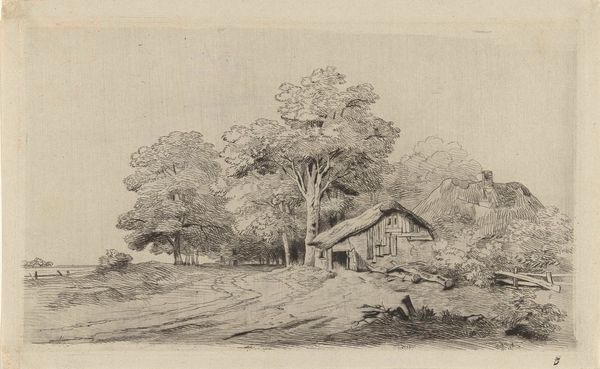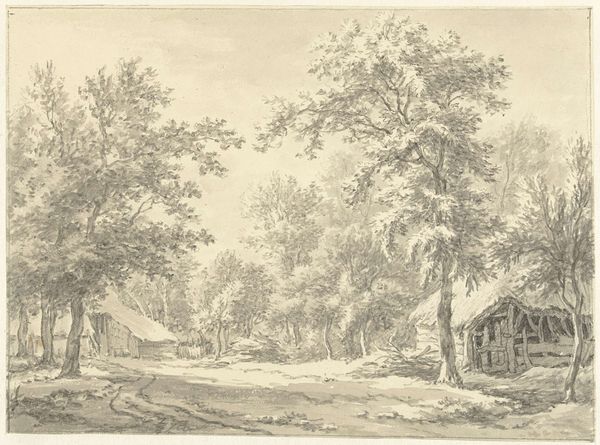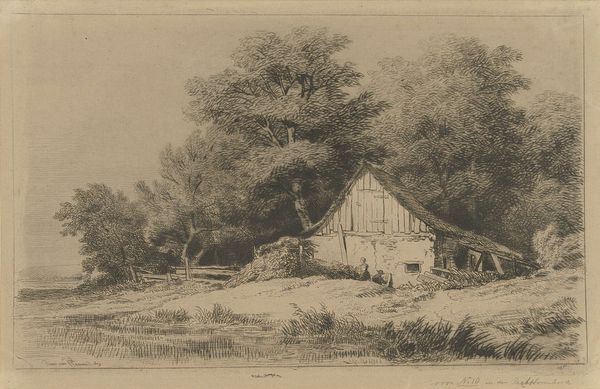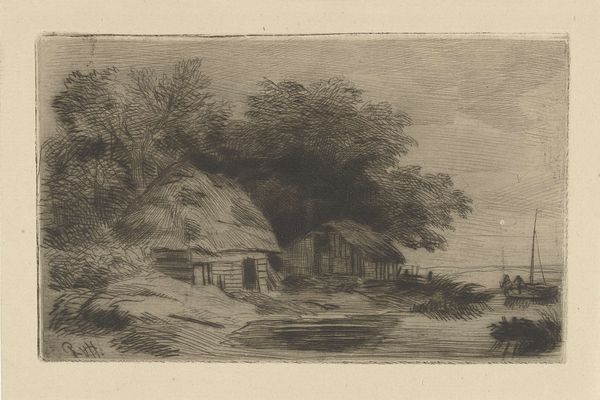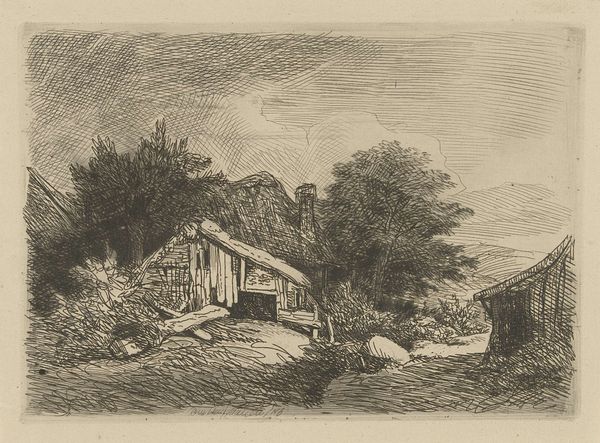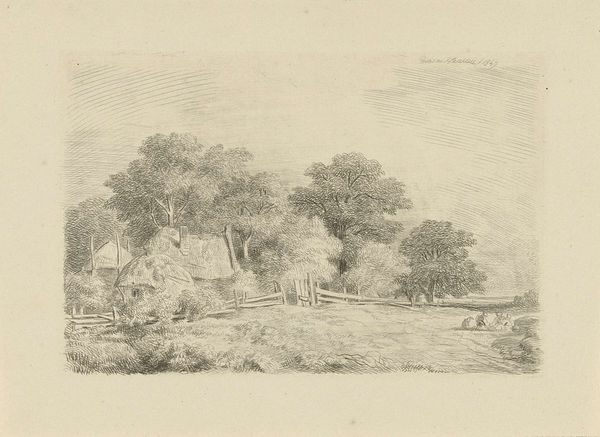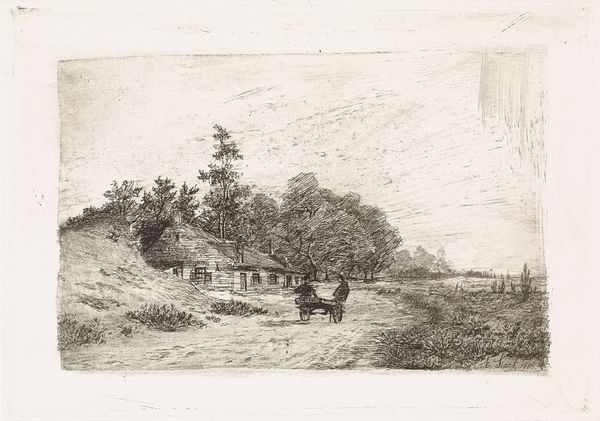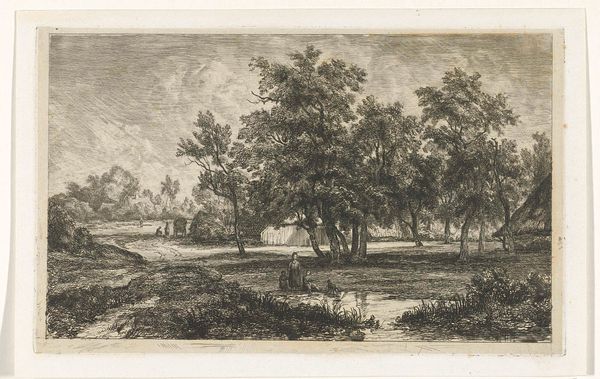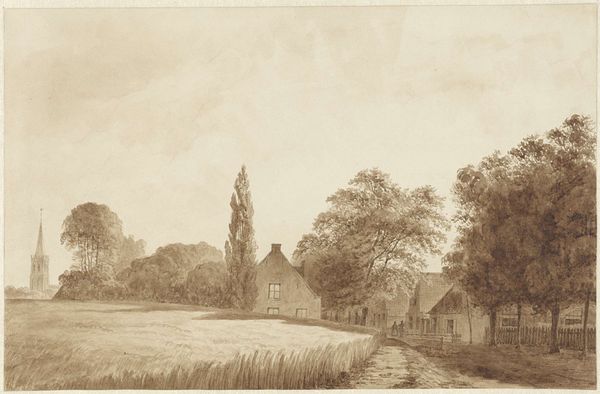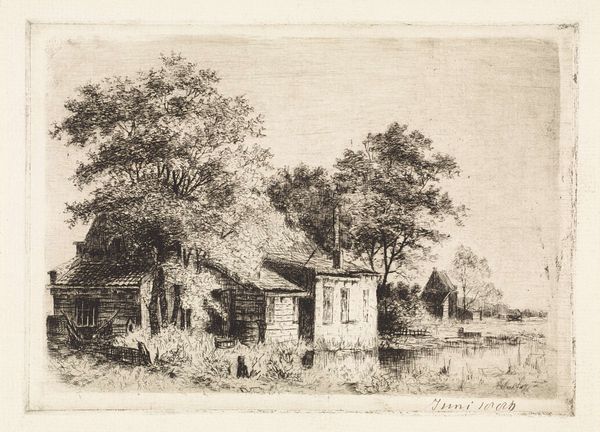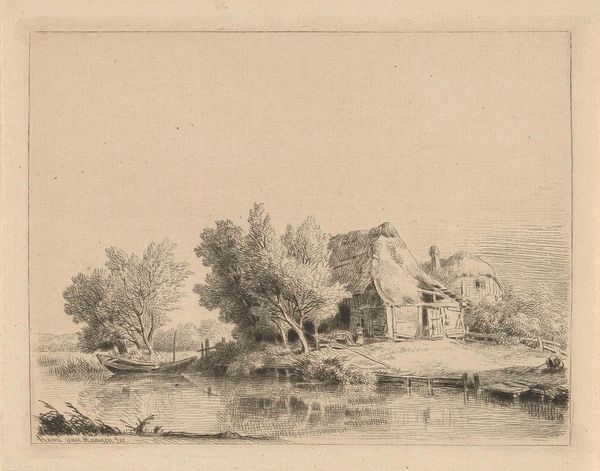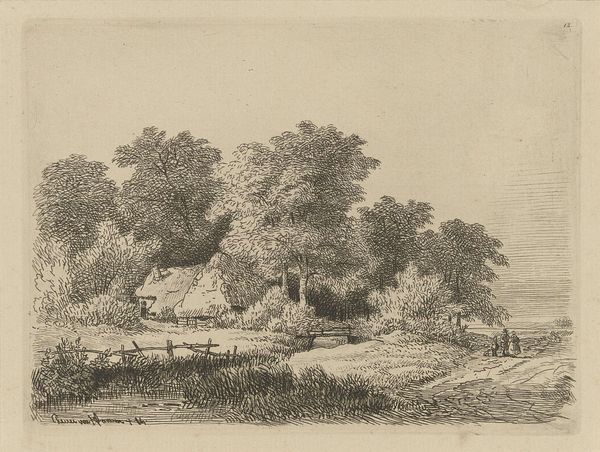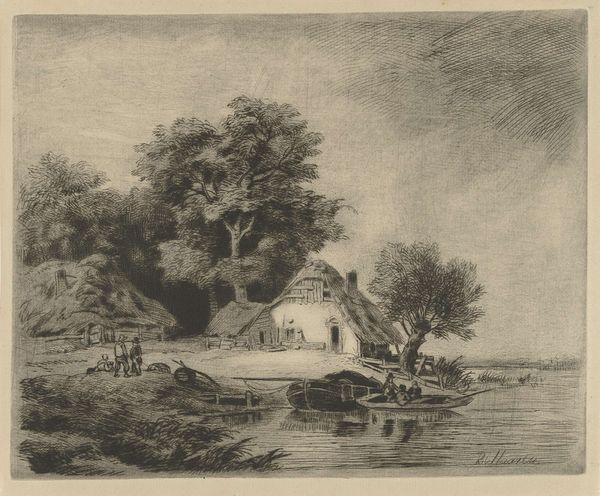
drawing, print, etching
#
drawing
# print
#
etching
#
landscape
#
pencil drawing
#
realism
Dimensions: height 155 mm, width 263 mm
Copyright: Rijks Museum: Open Domain
Curator: This is “Farmhouse by a Road”, an etching attributed to Remigius Adrianus Haanen, likely created sometime between 1827 and 1879. Editor: It’s quite evocative, isn't it? Melancholy, perhaps? The impending storm, that lone figure on the path… It makes you wonder about rural life at that time. Curator: Indeed. Etchings like this were important for circulating images of the countryside and shaping urban perceptions of rural life. They speak volumes about the socio-economic realities facing agricultural communities during that era. Consider the political implications around land ownership. Editor: Certainly, and even within the genre of landscape art, choices were made. We see a modest dwelling; no grand estate. It almost feels documentary in its detail. What can we infer about the status of these families who likely worked that farmland? Curator: Exactly. The artist, Haanen, came from a family of painters, so he understood the artistic conventions. However, pieces like this reflect broader concerns within 19th-century society: urbanization, industrialization, and the displacement of rural populations. Who exactly was his intended audience? And what did they make of this image of rustic life? Did it inspire romanticism, or a call to reform the poor state of the country folk? Editor: Perhaps both, depending on the viewer. The composition reinforces that dichotomy. The darkened sky, the almost dilapidated buildings... It could be viewed as a commentary on the neglect of the farming class. There's also a strange beauty though, isn't there? Curator: Definitely. Haanen’s technique is superb, even if its message is multi-layered and at least somewhat ambivalent. The contrasts he draws between light and shadow, the texture achieved through etching - they are striking. Editor: Seeing this etching makes me think about how we continue to grapple with similar social disparities today. Land access, environmental justice... This scene resonates across time, a constant cycle of exploitation, in many instances, for vulnerable members of our communities. Curator: Precisely. These older works act like mirrors reflecting how far we've progressed as a society, or not, while questioning who continues to be disenfranchised today.
Comments
No comments
Be the first to comment and join the conversation on the ultimate creative platform.
